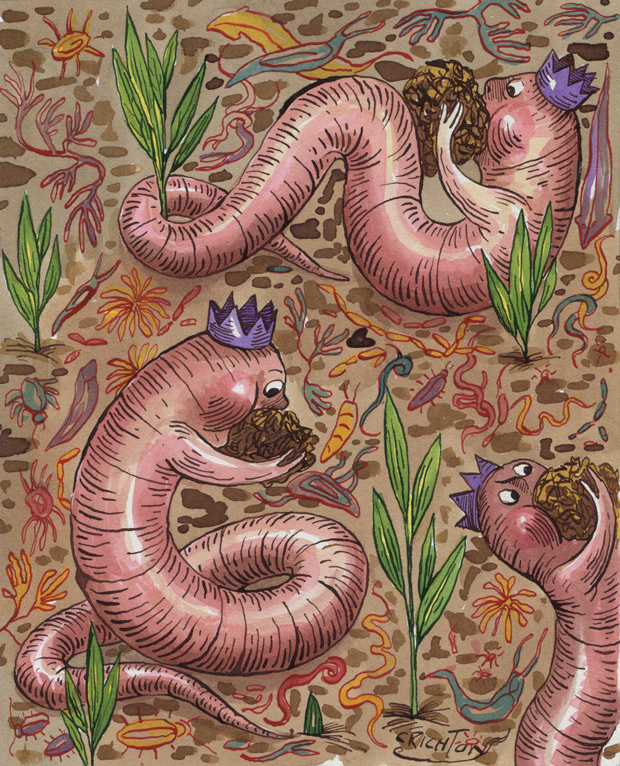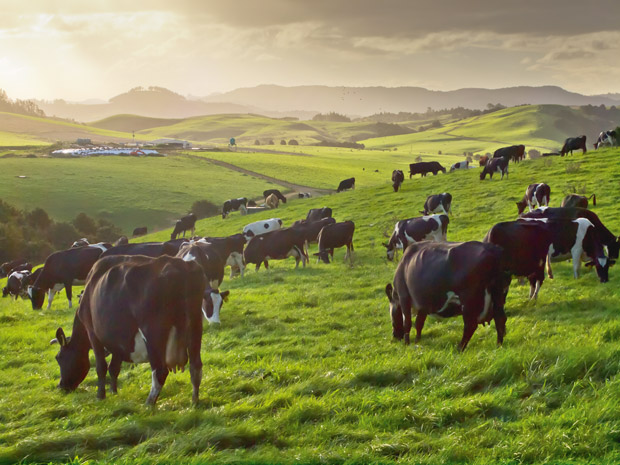Dr Mulgan: Balancing our food needs with the soil that supplies it

When it comes to climate mitigation, writes Dr Mulgan, Planet Earth’s survival is more complicated than most suppose.
Words: Dr Roderick Mulgan Illustration: Anna Crichton
Every planet in the solar system except one is named for a classical god. The exception is the most important — it is named after the stuff potatoes grow in, and we live on it. This is a curious lapse, which historians can’t explain, but whether by design or accident, Planet Earth’s name, despite being prosaic, captures an essential truth.
We live by earth as well as on it. It keeps us and every other land-based lifeform alive, yet when we contemplate the significant issues to which it is key, we ignore it.
Earth, or more appropriately topsoil, is the few feet of organic material surrounding the planet and is home to some startling statistics. A quarter of the Earth’s species live in it, and we likely haven’t identified most of them. It holds twice the carbon of the atmosphere and three times the carbon of plants and could assist the climate crisis if managed differently. Almost all our food comes from it, but like everything else precious, humanity is trashing it like a drunken mob at a rock concert.
Topsoil adequately managed is a forest. The megafauna is worms, which make tunnels for water and air and process organic material by eating it. Charles Darwin wrote that worms had played a more significant part in world history than any other animal, and he would know. Worms live with smaller organisms such as nematodes and tardigrades and tiny ones, such as bacteria and fungi, which also decompose what comes their way into a soup of nutrients that feeds everything above them.
One teaspoon of soil can contain a billion beings if it is the healthy stuff, but too often, it isn’t. Modern farming usually has less to do with soil and more with dirt or the lifeless residue from which living things are gone.
Good soil grows, just like trees. If you have ever seen an archaeological site such as a section of a Roman road or the foundations of a classical building, you will have looked over the edge of a pit. The six feet between you and the stones of antiquity are two millennia of what soil does when left to its own devices.
And like trees, the soil grows by sucking carbon from the air. Partly that is because plants take carbon from the atmosphere and transfer it to the soil when they die and rot, but they don’t just do it by expiring. Living plants absorb airborne carbon and expel it through their roots for soil bugs to use. Soil rich with plants and bugs is a carbon sink.

Soil becomes dirt when it is not regularly replenished by leaves and dead wood falling on it, which happens when the plants growing there are sliced at their base and sent elsewhere for people to eat. It also occurs when synthetic fertilizer is tossed in. Some fertilizer can be useful; a nudge of nitrogen causes plants to grow bigger and better, which is a boon to farmers and soil, provided the hand behind it is light. Unfortunately, the world demands enormous amounts of food, and vast quantities of fertilizer deliver them. Pouring on chemicals works well for delivering calories, and feeding all of humanity would be a struggle without them, but the price is dead soil.
Dead soil grows limited food without nutritional richness, but that is not the worst of it; the bigger problem for the future of food is that dead soil is unstable. A moist mulch holds together. Dirt is a powder that blows and washes away, particularly when ploughs turn it over. Farmers don’t like their best asset disappearing from under them, and agricultural practices to protect soil are gaining ground (so to speak).
They include sowing things such as clover between harvest and next year’s seed, dividing cropland with hedges and grass strips, keeping fertilizer to a minimum and planting without ploughs, otherwise known as no-till. Soil health is a regular topic in farming literature, dramatically more so than 20 years ago, but there is a long way to go. Chemically driven calories are still good business.
The issue also challenges the gospel, according to “Green”, that milk and meat are bad for the climate. Not so fast, bean people.
Animals that eat grass are bad for the climate because they belch methane. But, without them, we eat plant food, particularly mass-produced cereals, which are the worst offenders in the soil-depleting stakes. Grass is a permanent ground cover that gives up its crop to cows and sheep without upending the ecosystem underneath, provided the farmer is restrained with the synthetic chemicals. Animals complement grass rather than exploit it by the stimulation of regularly eating it down and returning their manure. Soil bugs think it is Christmas to be shat on, and wandering cows regularly oblige.
So, the environmental choice between crops and animals is more complex than it is usually painted. When official sources bang on about the climate cost of ruminants, they typically ignore earth enhancement, although they shouldn’t. There is more to natural climate mitigation than more trees.
Feeding ourselves means balancing our needs with the system that supplies them, which is not incompatible if the science is understood and making food is treated as more than strip mining. The alternative cannot last. Planet Dirt really doesn’t have a ring to it. Or, chances are, any people on it.
Love this story? Subscribe now!
 This article first appeared in NZ Life & Leisure Magazine.
This article first appeared in NZ Life & Leisure Magazine.
